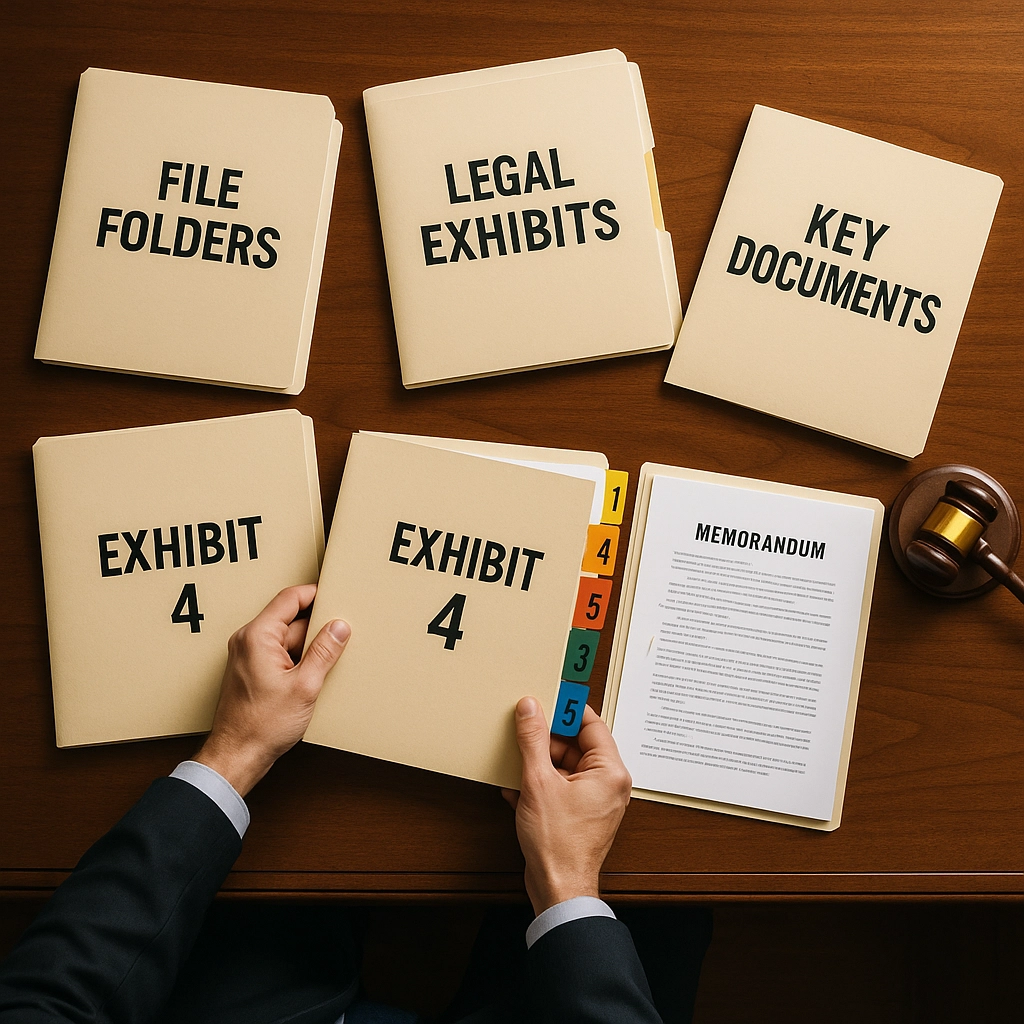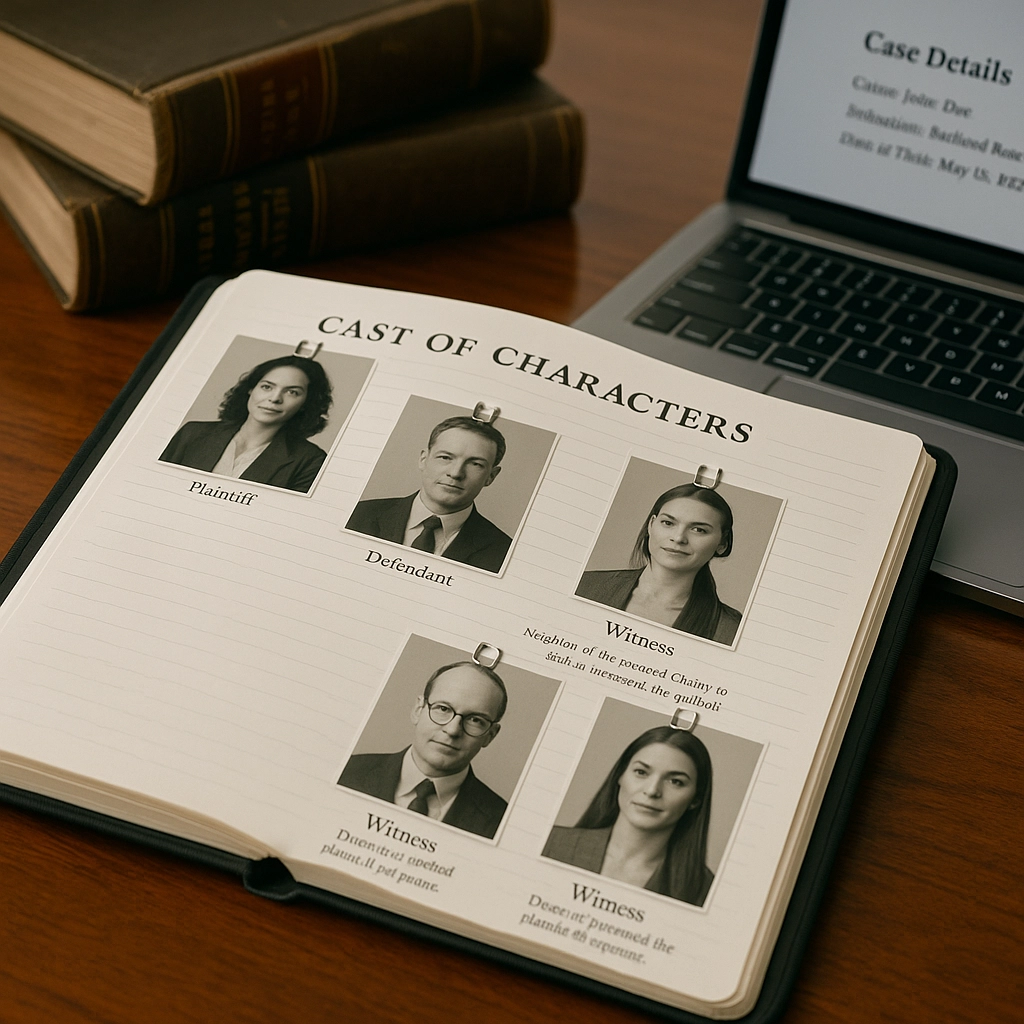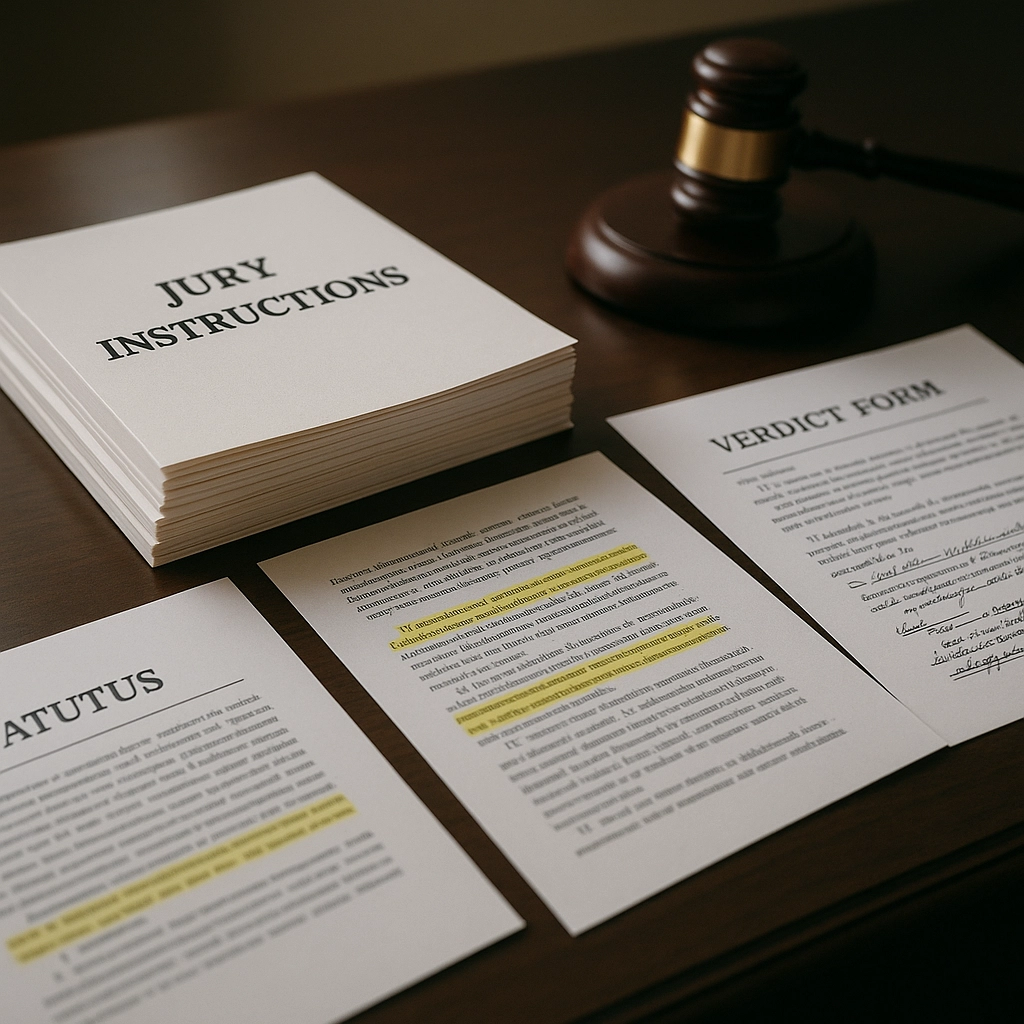When in doubt, tab it out!
There’s nothing quite like the energy and pressure of your first trial. Whether you’re still getting used to courthouse security or already keeping a fresh pair of shoes under your desk, one thing is universal: a solid, organized trial notebook is your anchor in the storm. For every young litigator, the trial notebook isn’t just paper; it’s your lifeline when the judge is firing questions, your witness takes a left turn, or opposing counsel tries a surprise attack.
Let’s break down the five must-have tools every young litigator should keep front and center in their trial notebook.
1. Witness Dossier (Outlines and Scripts - and more!)

Think of your witness dossier as "everything you need at the podium to deal with the witness."
First- have in witness dossier all of the witness' reports, statements, deposition transcripts (indexed!), as well as your outlines and scripts. You don't want to have to look for anything in the midst of a direct or cross! Have it ALL there with you.**
Your outlines are your script and your safety net rolled into one. For each witness you plan to call (and even those you might face from the other side), have a dedicated section that covers:
- Key questions you intend to ask
- Anticipated answers and notes on how to deal with surprises
- Follow-up questions and backup plans
- Evidence you plan to introduce through that witness
Direct examination, cross-examination, and even impeachment points should all be clear in this section. For expert witnesses, include short bios, credentials, and relevant publications. Don’t forget to flag any vulnerabilities or landmines; your future self will thank you mid–cross-exam when you’re tired and running on adrenaline.
Pro Tip: If your matter is complex, consider a slim supplemental notebook just for each key witness so nothing gets lost in the shuffle.
2. Exhibit Lists and Key Documents

If there’s one place you can’t afford a mix-up, it’s with your exhibits. Your trial notebook should include a master exhibit list—numbered, described, and checked off when admitted into evidence. But don’t stop there!
- Tab and index all crucial documents—contracts, emails, photos, reports, diagrams, anything that tells your story.
- If your case hinges on a few linchpins, have hard copies at the ready and digital backups if the judge allows technology in court.
- It’s smart to have short “cheat sheets” with quick references (e.g., “Defendant’s Exhibit 4 = The smoking gun email!”).
A well-tended exhibit section is the difference between commanding the room and frantically flipping through pages while everyone’s watching.
3. Case Chronology and Summary Charts

Jurors crave clear, simple narratives. So do judges. But as counsel, you’re living in a storm of depositions, emails, and deadlines. Enter: the case chronology and easy-to-read summary charts.
- Chronology: A timeline of events—think of this as your “storyboard.” It should be succinct and include dates, events, and key players.
- Summary charts: Visual aids—like organizational charts, cause-and-effect diagrams, or timelines—that boil complex evidence down for quick reference.
Not only do chronologies and charts help jurors (and you) follow the plot, but they can save your bacon during argument or witness examination when someone needs a refresher on who did what, and when. Visuals aren’t just for PowerPoints; even a printed color chart in your notebook can make a difference.
4. Cast of Characters and Key Information

Case files tend to balloon out of proportion, especially when you start dealing with multiple witnesses, parties, or convoluted corporate structures. You need a crystal-clear “who’s who”:
- Cast of Characters: Brief bios, roles, and why each person matters
- Connections: Relationships, affiliations, and any conflicts of interest
- Key information: Snapshots of relevant facts, numbers, or admissions tied to each character
Even seasoned lawyers have been sunk by forgetting a minor player or confusing two witnesses with similar names. This section is your quick reference, so you won’t be caught off guard when the judge asks, “Who’s Ms. Smith, again?” Bonus points for adding photos or other quick identifiers.
5. Legal Framework and Jury Instructions

This is your North Star. The legal instructions that will guide the jury are more than closing-argument fodder—they should shape every examination, argument, and piece of evidence you present.
- County- or state-specific jury instructions: Know them cold. Tab and highlight.
- Verdict forms: Include templates and samples so you know exactly what the jury will have to decide.
- Key statutes, rulings, memos: Pull relevant law, evidentiary rulings, or important precedent—tab the essential ones for instant access.
- Pre-trial orders and motions in limine: These sometimes set the rules for what evidence gets in; being able to reference them instantly is invaluable.
With these tools, you’re always steering your case toward a verdict that fits your theme—not hoping to wedge your story into the jury instructions “at the end.”
Building a Trial Notebook that Works for You
There are hundreds of ways to organize a trial notebook—and every attorney swears their way is best. But the top priorities never change: accessibility, clarity, and speed. Your trial notebook should be a living document—annotated, marked up, and ready for curveballs.
Quick checklist:
- Use color-coded tabs or sticky notes for each section
- Keep backup digital copies (if allowed by the court)
- Update your notes and outlines after every pretrial hearing or witness interview
- Practice pulling any tabbed document in under five seconds
Want to see real-life examples or get your hands on professionally crafted templates? Check out our Trial Notebook: Lessons Learned from the Courtroom and other practical resources at eLEX Publishers.
Final Thoughts
No matter how good your memory or improvisation skills, a thoughtfully constructed trial notebook is how you keep control when the unexpected happens (and it always does). Start simple, build your own system, and focus on what you need at your fingertips in the courtroom. The judge—and your nerves—will thank you.
For more trial skills, articles, and templates crafted by real trial lawyers, swing by our resource library.
